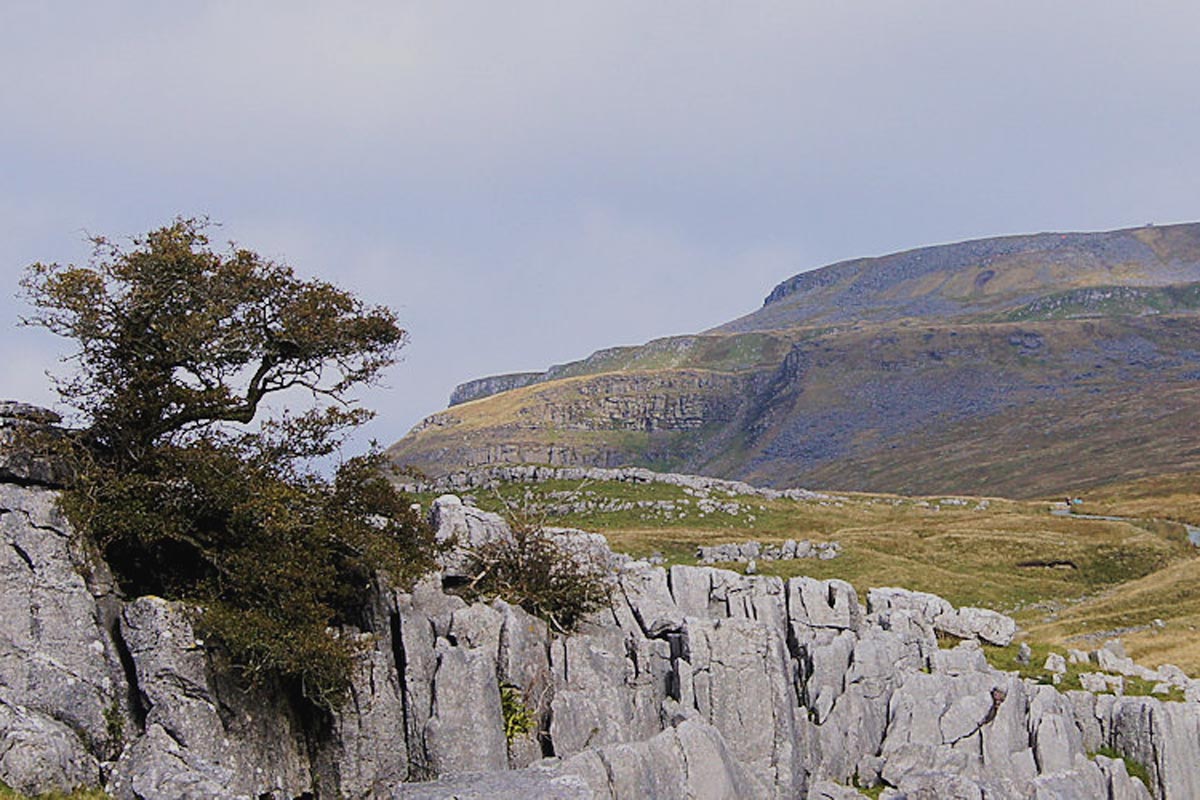I love the sea. I’m not alone, many people do. I swim in it regularly, like to sit beside it daydreaming to the horizon. It would be awful, with catastrophic consequences, if we ruin the the life it contains when we dont have to. This is my, a swimmer not a scientist, guide to overfishing.

Let’s start with a few stats. In the last 100 years men in the UK have grown 10cms taller. Other developed economies have seen a similar increase. We eat better, and we’re better at preventing disease so the food we eat makes us grow rather than fighting illness.
We’re eating more, about 30% more than we were 50 years ago. We’re living longer. In the 1950s we lived to about 50 years old. Today we’re averaging 71.
And there’s more of us, a lot more.
Since the 1950s, the number of human bellies to feed has tripled from about 2.5 billion to 7.2 billion in 2014. The global population set to continue its rapid rise to 9 billion by 2050.
All this eating is putting huge pressure on the resources of the world.
Fish accounts for just over 1% of the world’s diet, we eat about 136 million tonnes of fish each year and another 22 million tonnes is used for other stuff like feed in farming and pharmaceutical production. That’s 160 million tonnes of fish we’re pulling out of the seas each year, a pile similar in size to over 1000 stacked London buses!
In 2002 the UN’s Food and Agriculture Organisation (FAO) estimated there were about 4 million fishing boats in the world, in 2012 that number had grown to 4.7 million. Yet with this increase in capacity we’re not catching anymore fish, fishermen just have to work harder. In fact, there’s been no real change in the amount of wild fish caught in the last 30 years.
But over last 30 years we’re now producing 70% more fish. As the sea’s natural fish stocks are at their limit, this increase is from aquaculture or fish farming. Aquaculture is the fastest growing sector of world food production.
The bottom line, 90% of the fish caught at sea is at its limit, we can’t catch anymore without significant damage to some fish species. And third of all fish caught at sea is beyond sustainable, without cutting back we’re at risk of driving some species to the brink of extinction.
The United Nations Food and Agriculture Organisation (FAO) has classified
- 61% of fish as fully fished
- 28% overfished
- 10% underfished
What does this mean?
Fully fished refers to the balancing point between the maximum of a particular fish species we catch (the total catch) and the number we need to leave in the sea to sustain a productive population, a population that can continue to produce the total catch amount indefinitely. Simply put, taking as much from the sea as we can today, without damaging what we can take from the sea tomorrow.
It is species dependant but the population size of a fully fished fish may be only 30% of its natural population size if left unfished.
An overfished fish is fished beyond the fully fished amount, putting the species in decline and producing less and less fish each year.
An underfished fish may still be well below its natural population size, but can supply more catch for human use without damaging future numbers of the fish.
As these cold definitions suggest fish stocks are treated as human fodder, their conservation only in context of future human food supply. The good news is a good portion of the fish we eat reproduces quite quickly. For some overfished fish, if we reduce what we catch or stop catching it altogether, in a few years their numbers should increase.
The bottom line, 90% of the fish caught at sea is at its limit
Managing the Seas
70% of the world’s surface is covered by oceans.
The United Nations is the global organisation that creates the framework for sharing the resources of the world and the interoperability of nations. Under UN law most nations claim the 200 miles from their coastline as their own. Further than that, like international airspace, the high seas belong to everyone. Within the 200 miles of a coast line, the seas are the exclusive economic zone of a nation just as if it were the nation’s land. But by old UN law anyone can fish in the high seas.
However, in recent times nations with fishing interests have created organisations to manage fish in the high seas called Regional Fishery Management Organisations (RFMOs). There’s two types of RFMOs. One is formed of nations adjacent to a sea, and nations with interest in fishing the sea. For instance the North East Atlantic Fisheries Commission has members including Russia, the EU and New Zealand and creates agreement between all its members to manage the fish stock in the North East Atlantic.
A second type of RFMOs is formed around fish that migrate across huge areas of the sea. The Commission for the Conservation of the Southern Bluefin Tuna manage Bluefin Tuna migrating across all the southern oceans.
Bluefin Tuna is possibly the poster boy of overfishing. Overfished to near extinction, only after huge public campaign and real need for action did nations, through RFMOs, agree on measures to save the fish. Nations agreed to cut back on the number of tuna they caught, catch only tuna of a certain size and past a reproductive age so Bluefin Tuna’s populations had a chance to rebuild.
Some say the critical state of Bluefin Tuna was a real lesson to nations, as a result we should see better management of all fish stocks in the future. Bluefin tuna is still listed as endangered and declining by the IUCN. And as a result of overfishing there are significantly more boats to catch tuna than there is tuna to catch.

RFMOs often still encourage overfishing. Member nations, each with economic interests to catch as much fish as possible negotiate catch quotas way above what scientific data recommends. Under RFMOs, often nations don’t invest enough in research to fully understand the number of fish left in water or support proper management of fish stocks.
EU Fisheries chief in February 2016 said of fish stocks in EU waters “are on the verge of depletion. All in all, 93% of the fish stocks assessed are overexploited.” The EU is one of the best funded fisheries and supposedly a leader in fisheries management!
To manage fish stocks RFMOs, nations and other organisations fund research to understand the number of each fish species their seas. Catch data and historic catch data, combined with field studies and sophisticated radar and sonar technologies, regulators can build up a profile of fish stock.
With this data fisheries organisations and nations set catch quotas. These quotas not only limit the number of fish that can be caught, but also the size and age of fish to make sure enough fish of a reproductive age are left in the sea to produce future stock.
While in theory these measures should prevent overfishing, underfunded research and quotas set for economic gain over conservation lead to overfishing. However the EU has committed no fish will be overfished in EU waters by 2020.
But catch quotas are proven to work. North Sea Herring numbers crashed in the late 1970s and fishing was banned. A gradual increase in catch quotas has seen a return of the North Sea Herring and continued stock management now sees North Sea Herring as sustainably fished. Fishermen even found in times when catch quotas were low, due to limited supply prices increased making up in part for lost income catching less fish.
With so many different interests competing for limited fish and such vast oceans, illegal fishing is a big problem. So much so that illegal fishing is thought to account for 15% of the world’s catch each year! One study estimates losses due to illegal fishing at $10-$26 billion each year. Coastal communities where fishing significantly contributes to local economies are particularly hurt by illegal and overfishing.
RFMOs spend about $26 billion each year to combat illegal fishing, and manage the seas. That money is spent on vessel monitoring systems, fish traceability systems, fish stock research, policing and subsides to support companies in the seafood industry.
While most of this money is spent on essential components to manage the industry critics argue some subsides are keeping unprofitable fishing boats on the water. Studies suggest there are enough boats to catch 2.5 times the amount of fish the seas can support, therefore critics say regulator subsidies are contributing to overfishing.
To get around quotas some fisheries mislabel fish from an overfished area as caught somewhere else. Between 2010 and 2012, the ocean conservation charity Oceana took 1,215 seafood samples from 674 retail outlets in the US and found 33% mislabelled. A study published in 2014 show 94% of UK fish as correctly labelled.
While mislabelling is also done for profit, labelling a cheaper fish as a more expensive one, the UN and influential economic block the EU are promoting labelling and traceability to combat illegal fishing.
The Marine Stewardship Council (MSC) is a worldwide organisation promoting sustainable fishing. For fish to end up in retail outlets labelled with the MSC caught sustainably logo, MSC members follow a traceability program that logs fish all the way through the supply chain.
Near 10% of wild caught fish in the world is certified as sustainably caught by MSC. 76% of the UK’s Sainsburys wild caught fish is certified as sustainable by MSC, the best record of all UK supermarkets. Asda, my local supermarket has an awful record at 8%. I’ll no longer buy fish at Asda instead shopping at Sainsburys. Look for the MSC sustainably caught logo when choosing your fish.
Another favoured tool with conservationists are Marine Protected Zones. Fishing is limited or banned altogether in important spawning and nursing zones to give fish the chance to reproduce. These zones can be beneficial to fishermen, often areas around protected areas become very productive fishing grounds as fish move out from their protected space.
However while scientists recommend 20 – 30% of seas should have some form of protection, the reality is only 3% are with a complete fishing ban in only 1%. A 2014 study of Marine Protection Zones in the Mediterranean Sea found that unless fishing is completely banned in an area, partially protected zones show little improvement of fish populations.
Catching Fish
Fishing sustainably is not just about the amount and profile of fish caught but also how fish is caught.
By catch is untargeted fish caught by fishermen then discarded dead or dying, and a major problem in the fishing industry. A report released in 2016 found the official figures of global catch should be 30% higher to account for bycatch and illegal fishing! That’s another pile 177 London buses high of fish we’re killing in ocean.
Trawling, longline and gillnet fisheries are generally thought to be biggest offenders when it comes to bycatch. Here’s a quick outline of some of the fishing gear
Bottom trawling involves dragging heavy nets along the sea bed scooping up everything in its path. Shrimp is caught like this where in some cases 60% of what is caught is discarded. Heavy nets damage important and sometimes fragile ecosystems limiting future fish population development. These heavy nets not only damage the bottom but can damage the fish they catch too, some of which is discarded.
Gill and Drift Nets float from the surface of the water down to form a mesh wall. Different size holes in the mesh catch different size fish. Smaller fish slip through the mesh unharmed and larger fish are too big to get caught. Gillnets prior to 1991 could run up to 60km when the UN introduced a max length of 2.5km. In some US fisheries, untargeted sharks and turtles similar in size to targeted swordfish accounted for 35% of catch and are dumped.
Trawling unlike gillnets do not allow larger fish escape as a net dragged behind a boat encloses the all fish too large to fit through the mesh.
Longline fishing targeting bigger fish like tuna and grouper often catches turtles, rays and sharks too. Fishermen can reduce the length of their lines (some can stretch up to 50miles long!) and use different hooks to reduce bycatch.
Floating Aggregation Devices (FADs) are man-made floats placed at the surface the ocean to attract a particular fish. Fishermen circle the FAD with their nets and scoop out the fish. However, it’s often many different types of fish attracted to the FADs therefore bycatch is usually higher when FADs are used.
Bigger boats have got a bad press blamed for a disproportionate amount of bycatch. The reality is it’s down to the choice of fishing gear fishermen use, and the area they choose to fish in. Good regulation and policing can take bad choices from fishermen.
Bycatch is mostly self-reported by fishermen and calculated on estimates. On board technology recording a catch, and fishermen fishing in the same area can be used to corroborate each other’s bycatch reports. The EU has introduced legislation requiring all fishermen to land everything they catch, and count all catch against quotas. This comes into force in 2019, and there’s pressure on other global fisheries to effect similar requirements.
A study in 2003 found there may only be 10% the number of large predatory fish there was before humans started fishing in anger. Larger fish has often been the target catch, but also their size makes it more likely they caught by trawl nets and longlines. Larger fish often produce offspring at a later stage in life, with longer gestation periods making it more difficult for larger fish populations to recover.
In the long run, healthy oceans are of most benefit to fishermen when there is more fish to sustain their livelihoods.
Aquaculture
About 58% of the fish we eat is farmed. A lot of farmed fish eats other fish, like salmon, but globally farmed fish produces twice as much fish as fish used in its production.
Human Damage
Not only are humans catching as much fish as we can, but we’re also doing our best to ruin their habitat. Human induced climate change is turning the sea acidic. An acidic sea damages the shells of crustaceans, but more importantly damages coral reefs.
Coral Reefs are a hugely important ecosystem housing about 25% of sea life even though they account for only 0.1% of sea area. Mangroves and seagrasses are safe havens for young and adolescent sea life, and other important species. These habitats are threatened by rising sea levels from climate change. The loss of these areas would have a massive effect on life in our seas.
Spills from oil and gas extraction, like the recent massive Deepwater Horizon spill cause huge damage to wildlife. Our search for oil seees humans drill deeper and to more inhospitable areas of the sea, increasing the likelihood for further spills.
It’s estimated we tip 8 million tonnes of plastic into the seas each year, plastics that can take hundreds of years to degrade trapping or killing fish during that time. Only 20% of human waste we put into the seas is treated, the other 80% harmful to natural marine life.
Fishermen discarding old nets trap and kill fish. Often these nets are made from synthetic materials killing fish for 100s of years before they break down.
Tourism, ocean cruises and other human recreation near coasts can be harmful to sea life.
What can we do?
As a consumer, we can help bring about change by choosing sustainably sourced fish at your supermarket. More than 50% of Sainsburys, Waitrose and Lidl seafood is MSC certified as sustainable. Less than 10% of Tesco, Asda and Morrisons fish products are sustainable. I found a lot of Sainsburys sustainably sourced fish is actually cheaper than the equivalent unsustainable fish in Asda. Look for the MSC blue logo.

Take a few minutes to look through the easy to read Good Fish Guide from the Marine Conservation Society. This is a good guide to understand what fish to choose. When ordering in restaurants, make sure to ask where their fish is from and don’t order fish on the Good Fish Guide Fish to Avoid List.
Understand fish in your countrys’ waters. These waters are the property of the nation, ie us! We need to take more interest, understand and appreciate this bio diverse resource and protect it for future generations.
Most fish we eat comes from a small number of species, by eating lots of the same species we put pressure on their populations. Try new varieties of fish and buy British and sustainable!
Support organisations like Oceana and Greenpeace with your attention, time or money!
Buy more farmed fish avoiding farmed fish of carnivorous fish like salmon. Farmed salmon eat about 5 times the quantity of protein humans get from salmon.
What we need our Governments to do
More effective industry support – Fund better quality research to build more accurate pictures of fish stock sizes and make sure subsides are not keeping otherwise unprofitable boats on the water.
Better regulating of fishing gear used, managing quotas scientifically with measures to reduce bycatch.
- Land and count everything caught. Don’t discard bycatch at sea, everything caught has to be accounted for and used.
- Good quality scientific based catch quotas implemented in timely manner to protect the population of all fish species
- Use fishing gear where fishermen can be more selective of the fish they catch, to reduce by catch
- Make sure every boat is monitored and seas are properly regulated and policed. Fund nations monitoring that can’t afford it.
- More marine protected areas to allow the fish species regenerate
Decisions on EU quotas and fisheries management are taken EU, the current UK fisheries minister is George Eustice. Make sure he knows you care about sustainable fishing! http://www.parliament.uk/biographies/commons/george-eustice/3934
Photo credits: OCEANA Keith Ellenbogen



